Exquisitely Unique: Okinawa Shines as Japan’s Southern Star
An introduction to all that this archipelago of unparalleled beauty has to offer, from delicious food and unique culture to unspoiled nature.
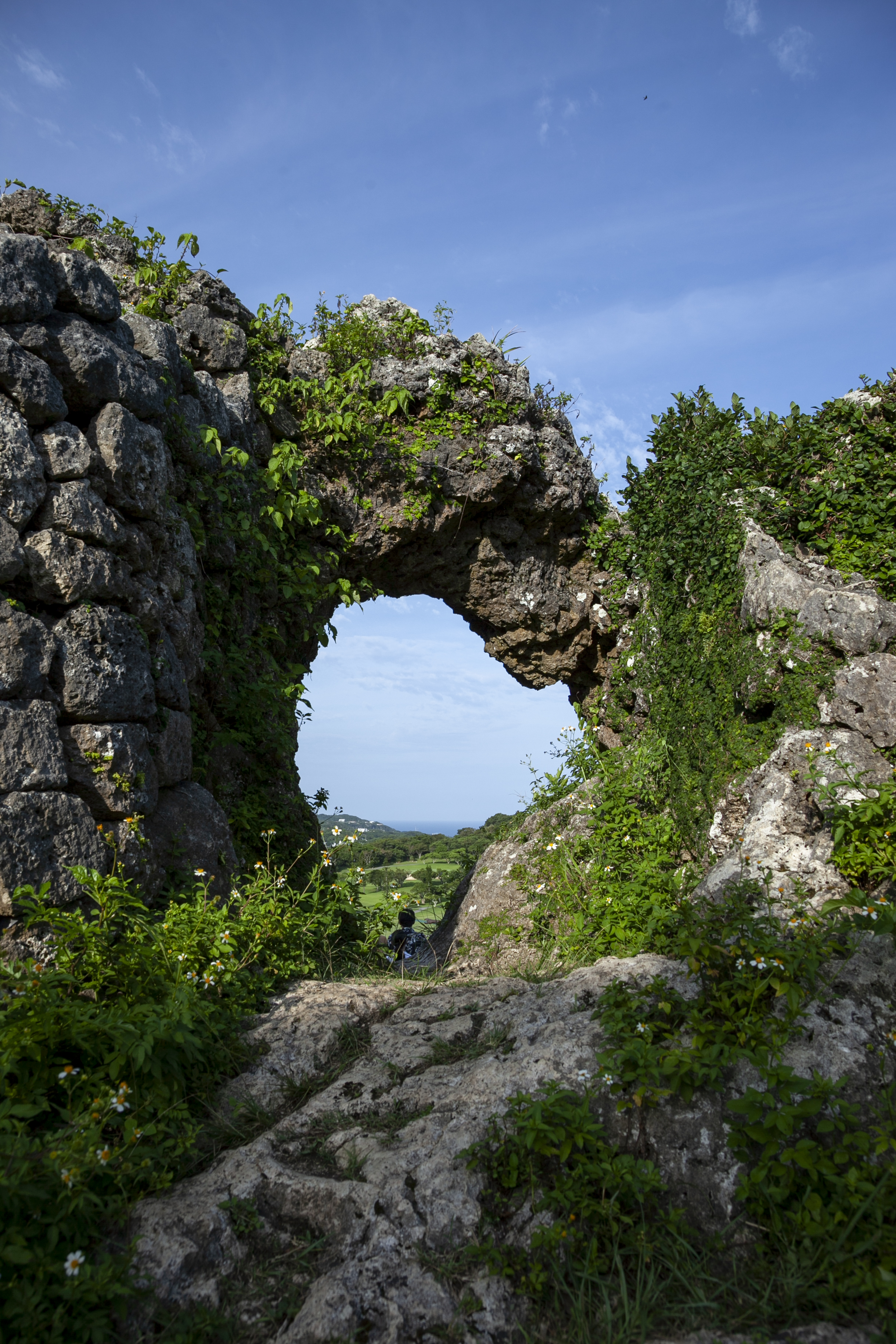
Tamagusuku Castle Ruins
When it comes to Okinawa, most people think about the pristine beaches and stunning sunsets that appear ubiquitously in promotional materials for Japan’s southernmost prefecture.
While these aspects of the archipelago contribute to its charm for willing itinerants, the islands’ unique history and culture makes for an experience that elevates Okinawa beyond a simple resort haven and into a full-fledged travel destination.
Indeed, if you add the aforementioned heritage and tropical-island environment to the budding dining scene that utilizes local ingredients, and the exceptional hospitality and luxurious accommodation facilities that reflect everything that makes Okinawa unique, you have a concoction of stimuli that will leave you wanting to come back.
This piece serves as an introduction to all the aspects mentioned above, offering suggestions that encapsulate the islands’ distinctiveness while placing a focus on the extraordinariness that one might expect from higher-end travel.
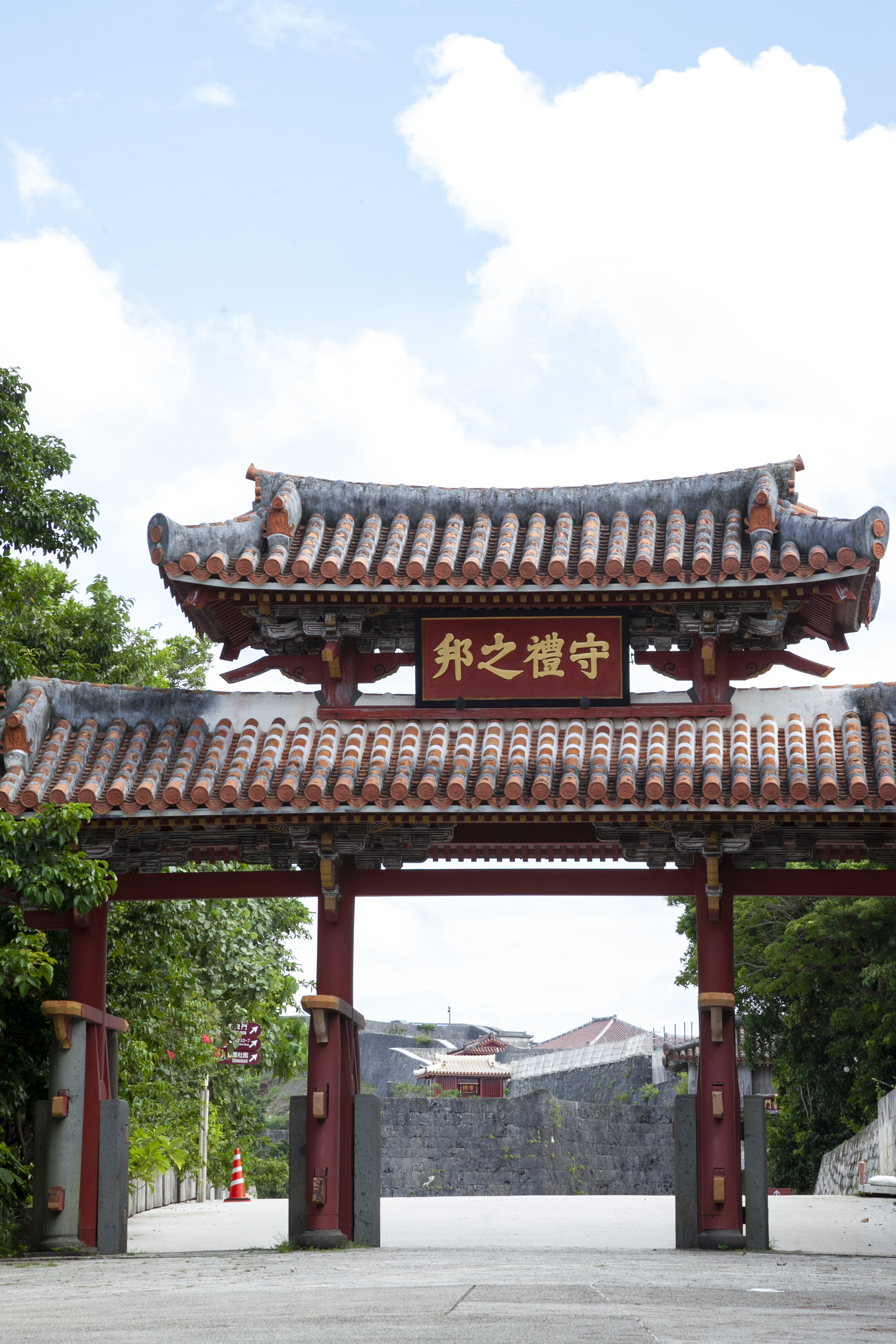
The most famous gate in Shurijo Castle Park, “Shureimon”
Equidistant from China and Japan, Okinawa’s modern history is shaped by the legacy of the Ryukyu Kingdom, which was established by the unification of various settlements around the main island in the early part of the 15th century.
The kingdom was based upon a tributary relationship to various Chinese dynasties, with Japanese influence growing once the Satsuma of Southern Japan placed the islands under their control in 1609.
This part of Okinawa’s history is best experienced at Shurijo Castle, which served as the palace of the kingdom until 1879, when the archipelago was formally annexed by the Empire of Japan.
While the palace is currently undergoing renovation following a fire in 2019, it is still open and dedicated to showcasing the Ryukyu heritage.
A visit is best followed up by having lunch at Nuchigafu, which serves a decadent plate featuring a multitude of traditional Okinawa cuisine—everything from the bitter-goodness of goya to Rafute, pork belly simmered in a miso concoction.
The food is made even better by the surroundings, as the traditional cityscape around the restaurant adds to the atmosphere.
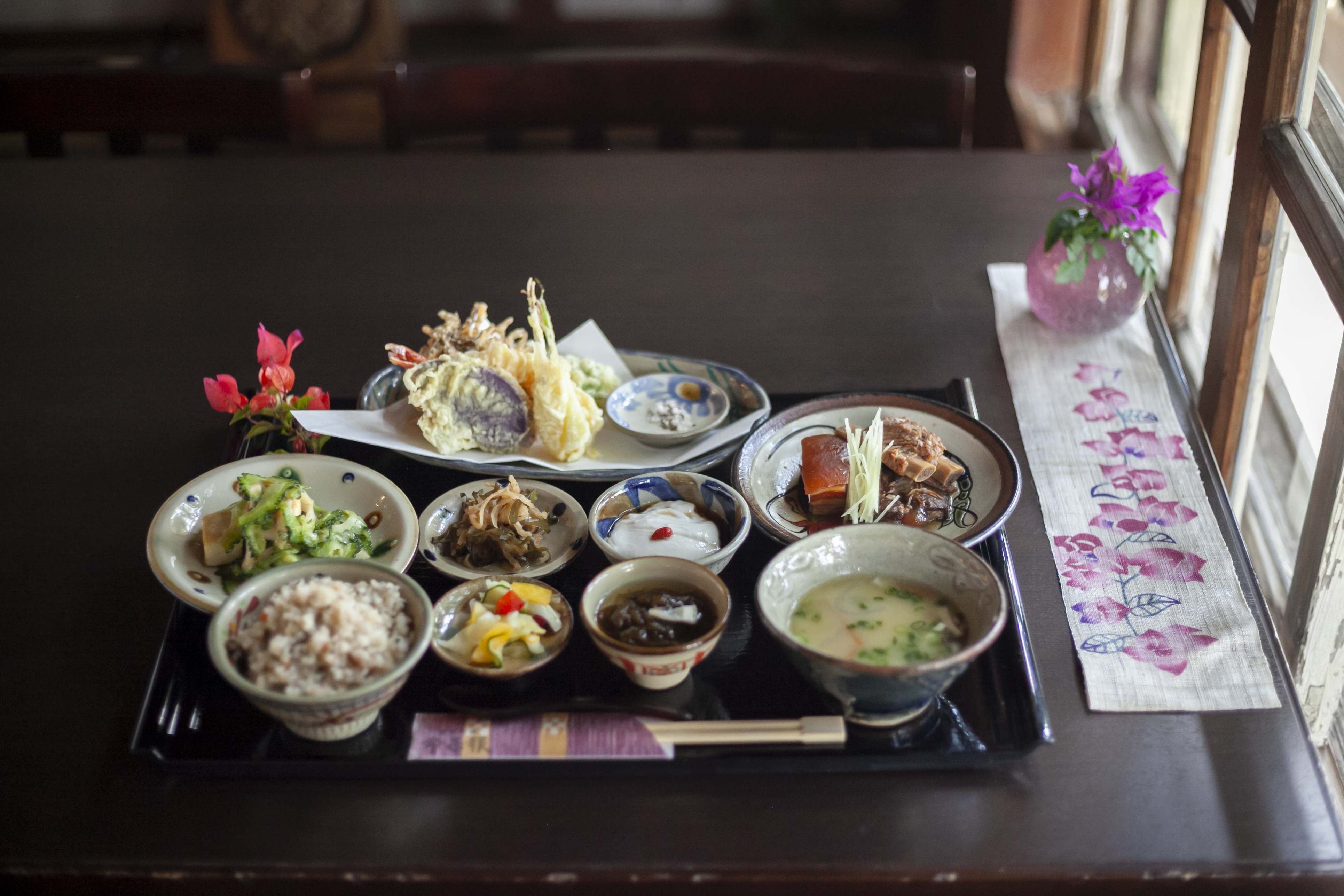
Lunch set at restaurant Nuchigafu
If it’s later in the day and you are in the mood for some drinks, Sakurazaka Le Bois is another good option.
Here, you will find a cuisine offering a European spin on local ingredients, but the highlight is without a doubt the in-house sommelier, who will be quick to satisfy any requests you have to sample wine from Japan and beyond.
With your interest in Okinawan culture hopefully piqued by now, it is time to delve deeper.
To do so, we head to Nanjo City, at the southwestern coast of Okinawa Island.
It is here where legends tell of Amamikiyo, the god who descended from the skies to birth settlement on the island.
The entire area features a multitude of what the locals call “power spots”, sites with deep spiritual significance.
The Tamagusuku Castle Ruins are one such spot. Built before the establishment of the Ryukyu Kingdom, it is the oldest castle on Okinawa, and legend says that Amamikiyo built it herself.
Yaharazukasa is another, marking where the goddess is said to have first appeared.
The fact that the stone indicating the exact location is positioned at the tip of one of the island’s natural sand beaches only adds to the beauty of this sacred location.
This beach, called Hyakuna Beach, is also the namesake of one of the most special hotels in Okinawa—or perhaps even the world.
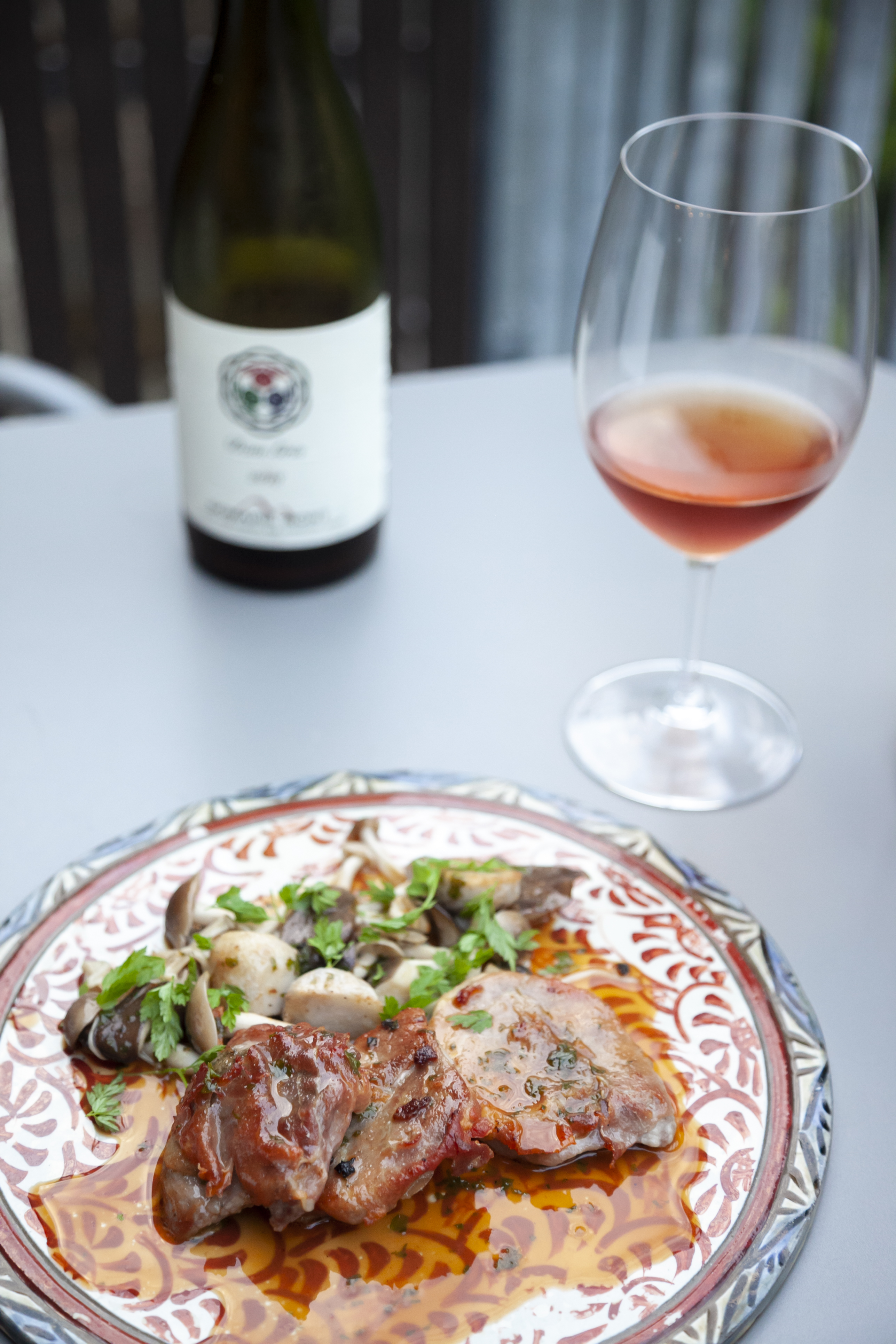
Dinner at Sakurazaka Le Bois

Yaharazukasa at Hyakuna Beach
Hyakuna Garan is a luxurious retreat that blends the spiritual nature of the area into its architecture.
Indeed, every single room features an open design to take advantage of the ocean wind, while the 220-degree-angle view that the property provides ensures that elegant shadows grace the hotel from sunrise to sunset.
Most of the hotel is adult-only, an exclusivity that adds to the almost Zen-like atmosphere designed to provide a complete respite from everyday life.
The rooftop open-air baths, best enjoyed under moonlight, add the finishing touches to this marvel that aims for a sophisticated form of relaxation found nowhere else.
The much-renowned property could not be further away from the urban bustle of Japan’s metropolises, and an evening spent here presents the perfect opportunity to shut off and reflect upon the sui generis nature of Okinawa’s culture.
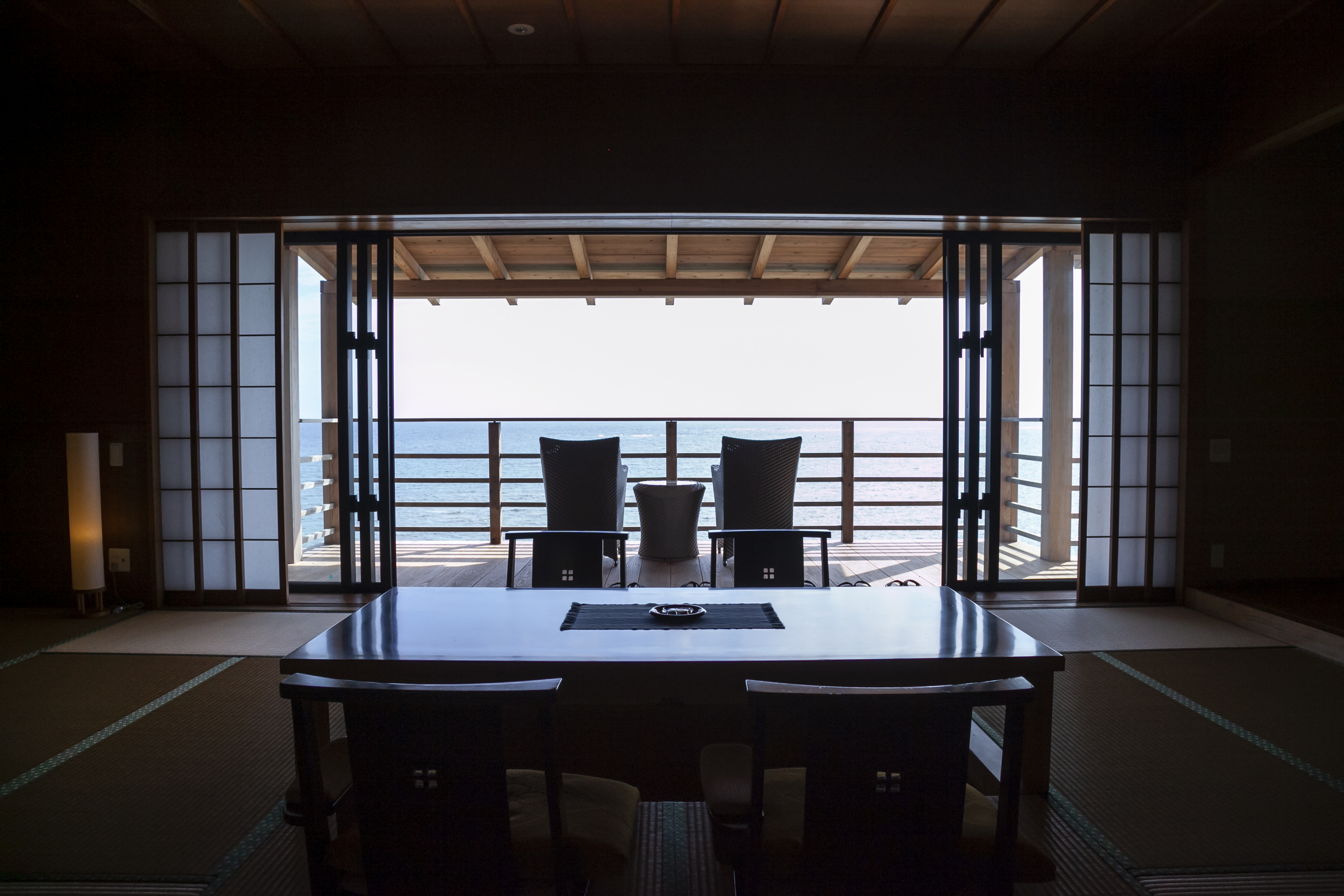
Hakuin room at Hyakuna Garan
Having experienced the spiritual heartland of Okinawa, it is now time to head to the glitzier west coast.
This area of the island has a decidedly more American influence, reflecting a different part of the region’s history.
The post-war establishment and expansion of American military bases has given birth to many businesses catering to members of the armed forces, and this overall influence has permeated everything from the Okinawa’s food (check out Gordie’s Hamburger, for example) to its modern culture.
Aside from the marked increase in shopping and dining options, the west coast of Okinawa Island is known for its classic tropical island-scape.
Unsurprisingly, this has led to major hotels setting up along the coast, one of which being the Halekulani Okinawa, the Okinawan offspring of the Hawaiian-born resort.

Restaurant Gordie’s Hamburger
Featuring a seemingly endless array of different pools, beach access, and a full assortment of activities, the Halekulani Okinawa has everything you have come to expect from a luxurious beach-front resort.
One highlight is the in-house restaurant “Innovative SHIROUX”, which puts a modern French spin on locally sourced ingredients.
The exquisite marriage of local Okinawan and high-end French tastes is truly an exceptional experience, and perhaps a testament to the potential of the island’s cuisine.
While a meal at this restaurant can unquestionably stand on its own, your experience will be enhanced even further if you happen to catch the sunset while dining.
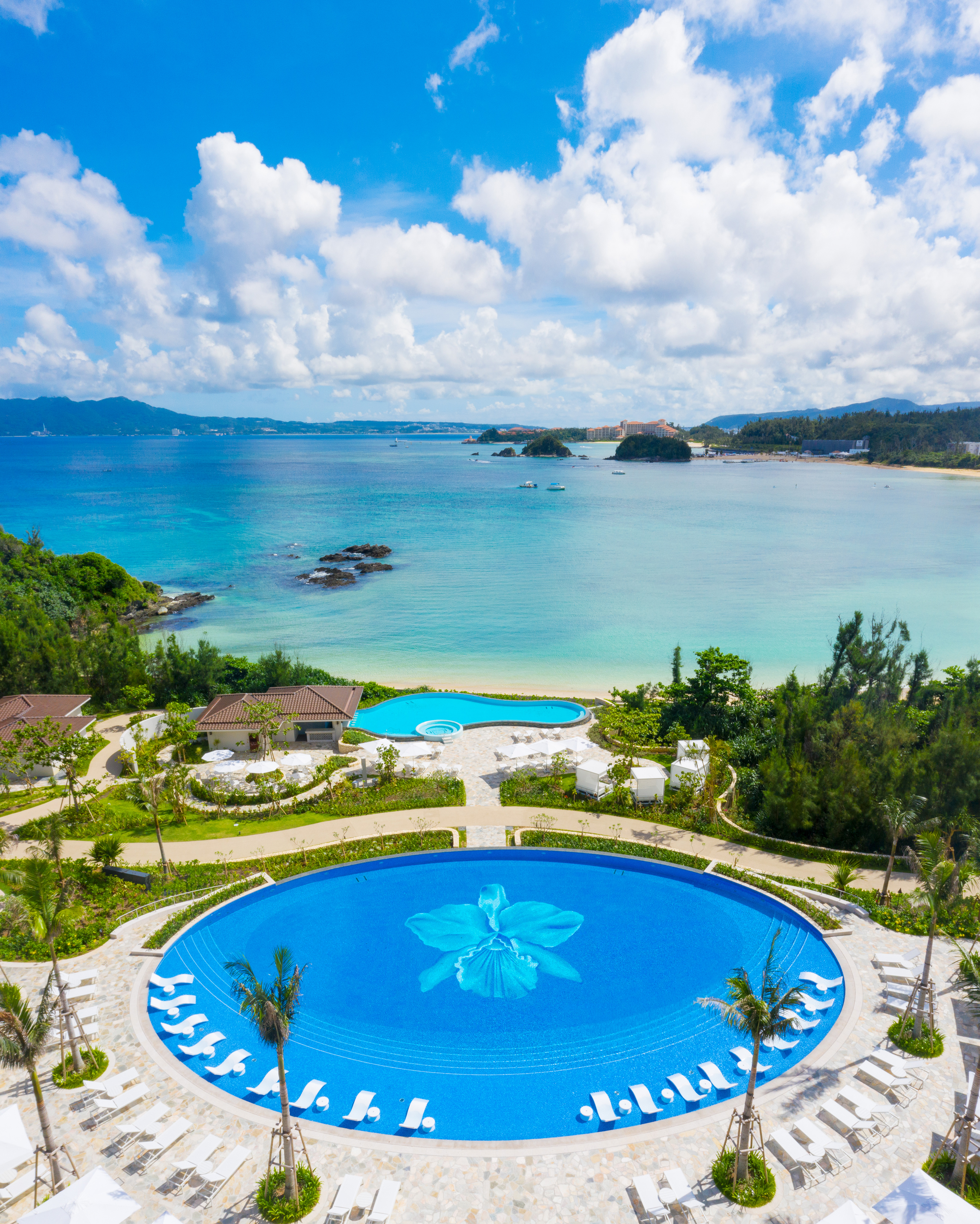
The iconic Orchid pool at Halekulani Okinawa
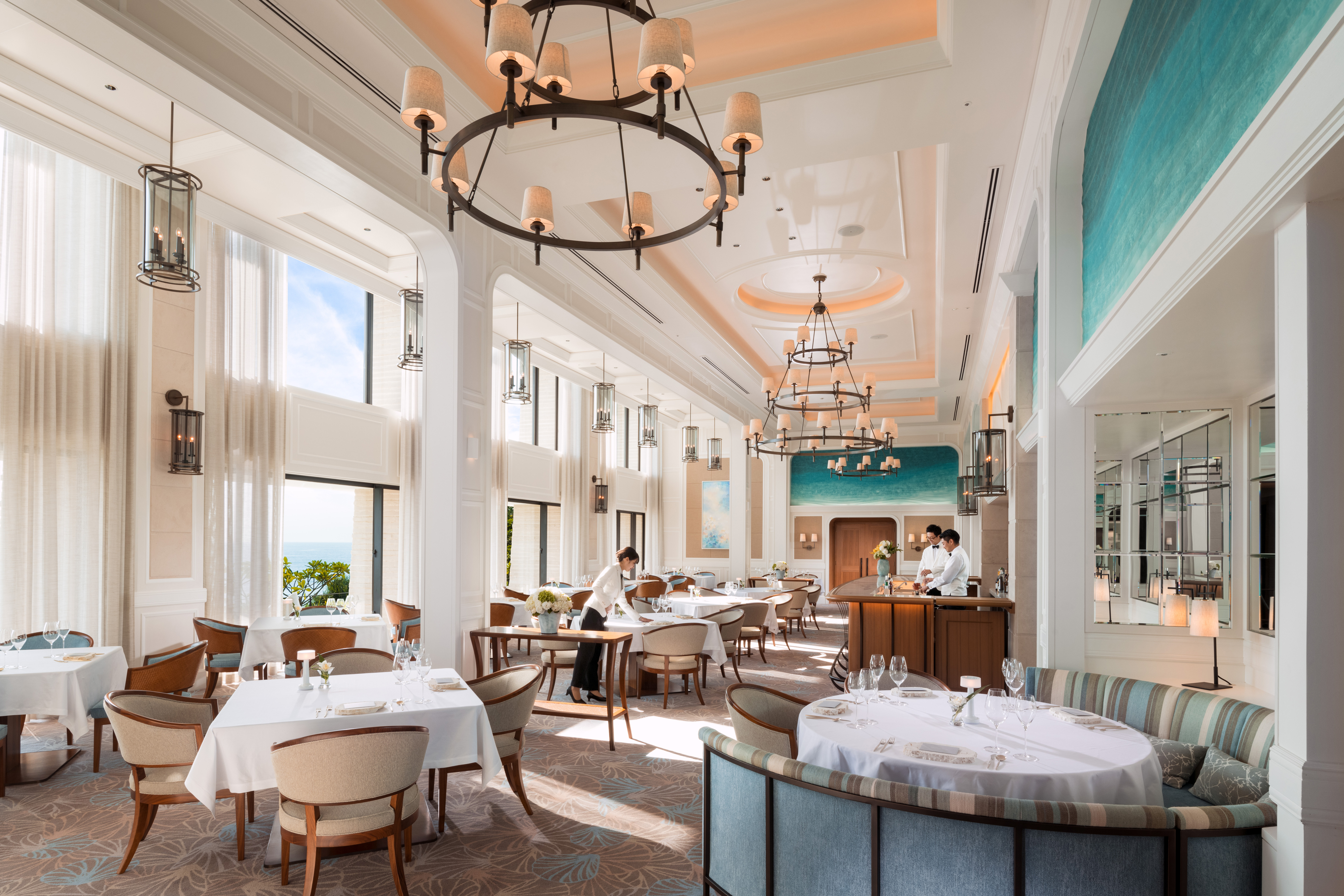
Halekulani Okinawa's main dining room, “Innovative SHIROUX”
At this point, you will probably be thinking of where to pick up an Okinawan souvenir, preferably something truly special.
Well, whatever your interests are, there are a myriad of options. For traditional pottery, head straight to the source at Yachimun-no-sato, where you can also see the iconic kilns nearby.
If you prefer glass tableware, you won’t be disappointed at HIZUKI. The designs by Kyoto-native-turned-Okinawan Miyo Oyabu surprise due to their delicate imperfections, with each piece being one of a kind.
Want to get something to wear home? LEQUIO has you covered. Here, Okinawa Indigo is utilized to dye a variety of casual but classy island wear (and if you are lucky, you can even witness the dying process live in-store).
Finally, if the local booze has caught your attention, LIQUID THE STORE in downtown Naha impresses due to its owner’s carefully chosen selection of the finest spirits, wines, and beers.
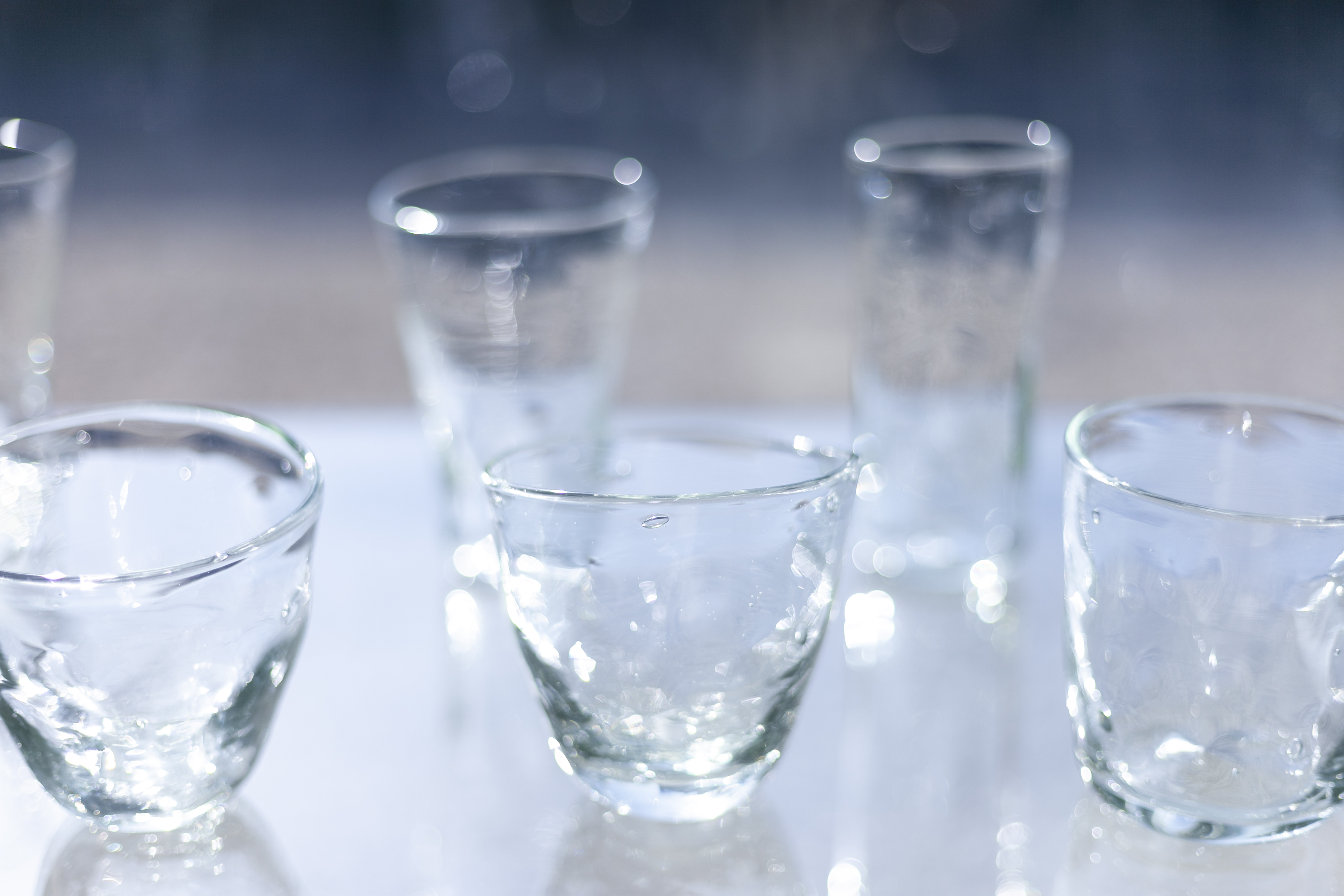
Glassware designed by Miyo Oyabu and sold at Hizuki
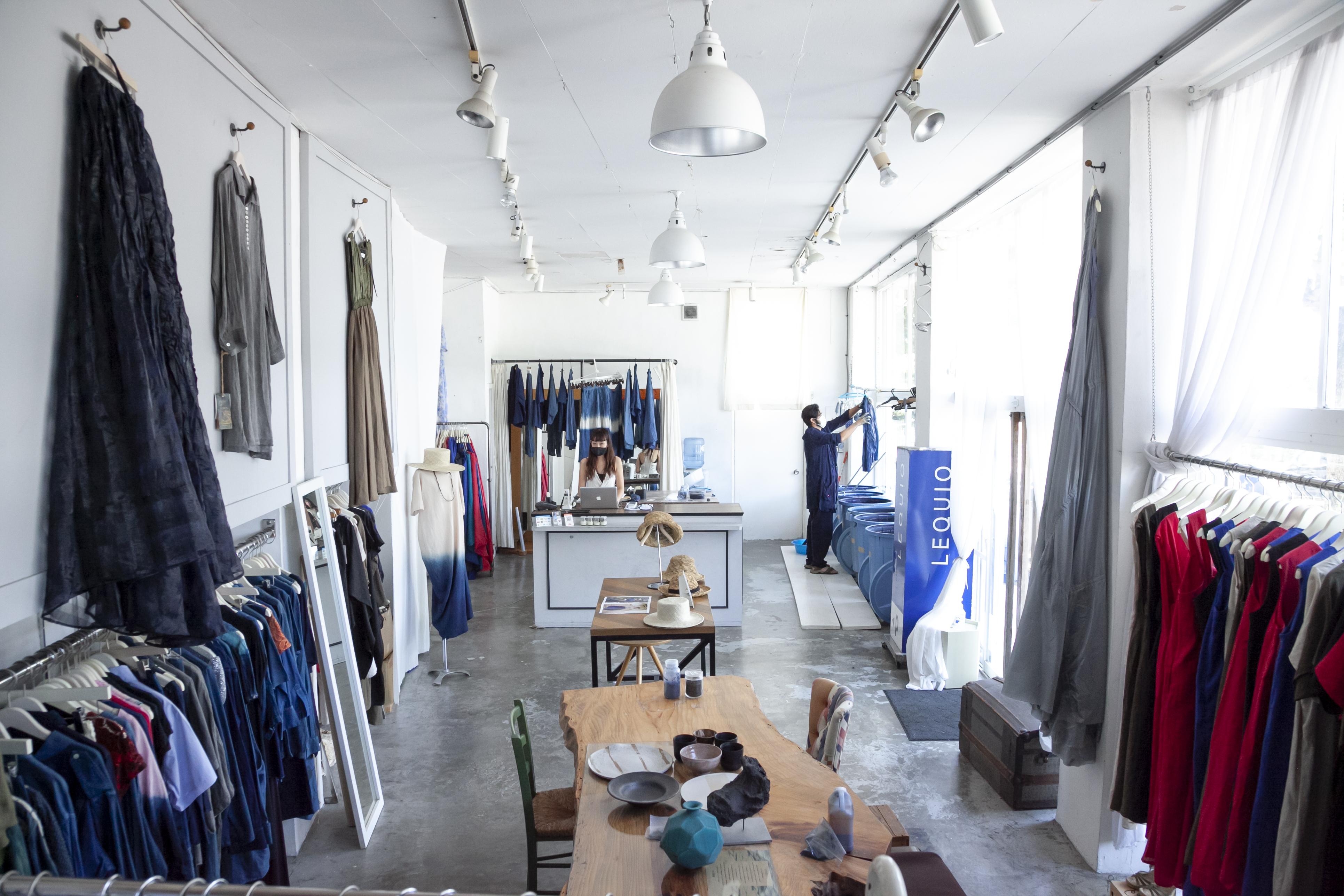
LEQUIO clothing store
Now, after a thorough pampering and with shopping taken care of, it might be time to get active and explore some of the island’s activities.
Aside from the obvious choice of heading straight for the ocean for snorkeling, diving, or surfing, there are also options completely unique to Okinawa.
The first would be a taking a karate lesson (hotels such as Halekulani will be happy to arrange one for you with a local Dojo).
Karate has seen an enormous increase in popularity around the globe, but Okinawa is where the martial art was originally developed.
The principles that can be learned even from basic lessons, such as proper stance, basic defensive moves, and concentrated breathing techniques, can be easily repeated in daily life and provide another glimpse into Ryukyu culture.
Another option would be to head further north, to the Yanbaru Forest.
Having recently been inscribed as a UNESCO World Natural Heritage Site, the hilly subtropical forest environment features distinctive endemic wildlife and can be enjoyed relatively easily—for instance through a guided tour by Yanbaru Discovery Forest.
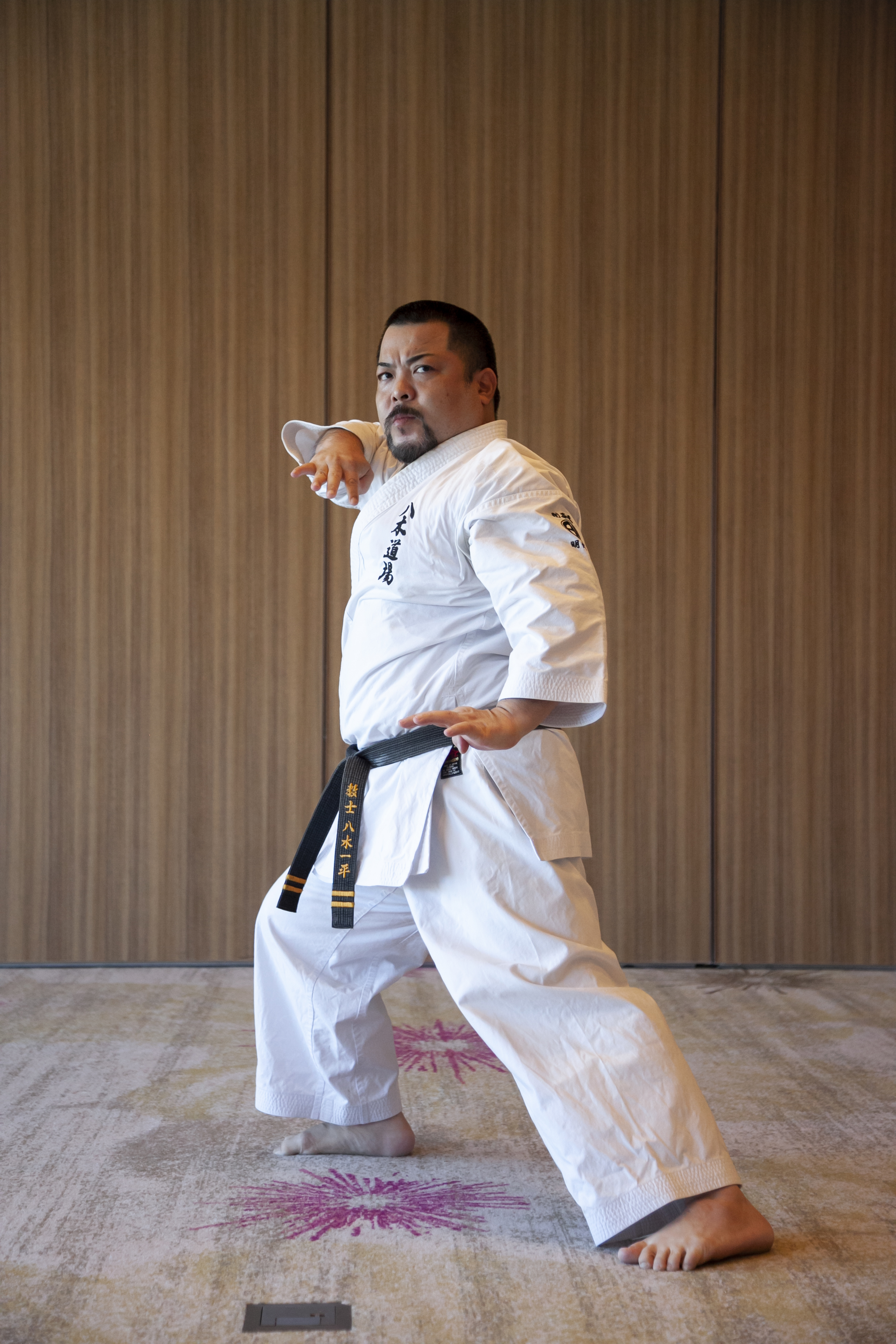
Demonstration of the Okinawan Karate by Ippei Yagi
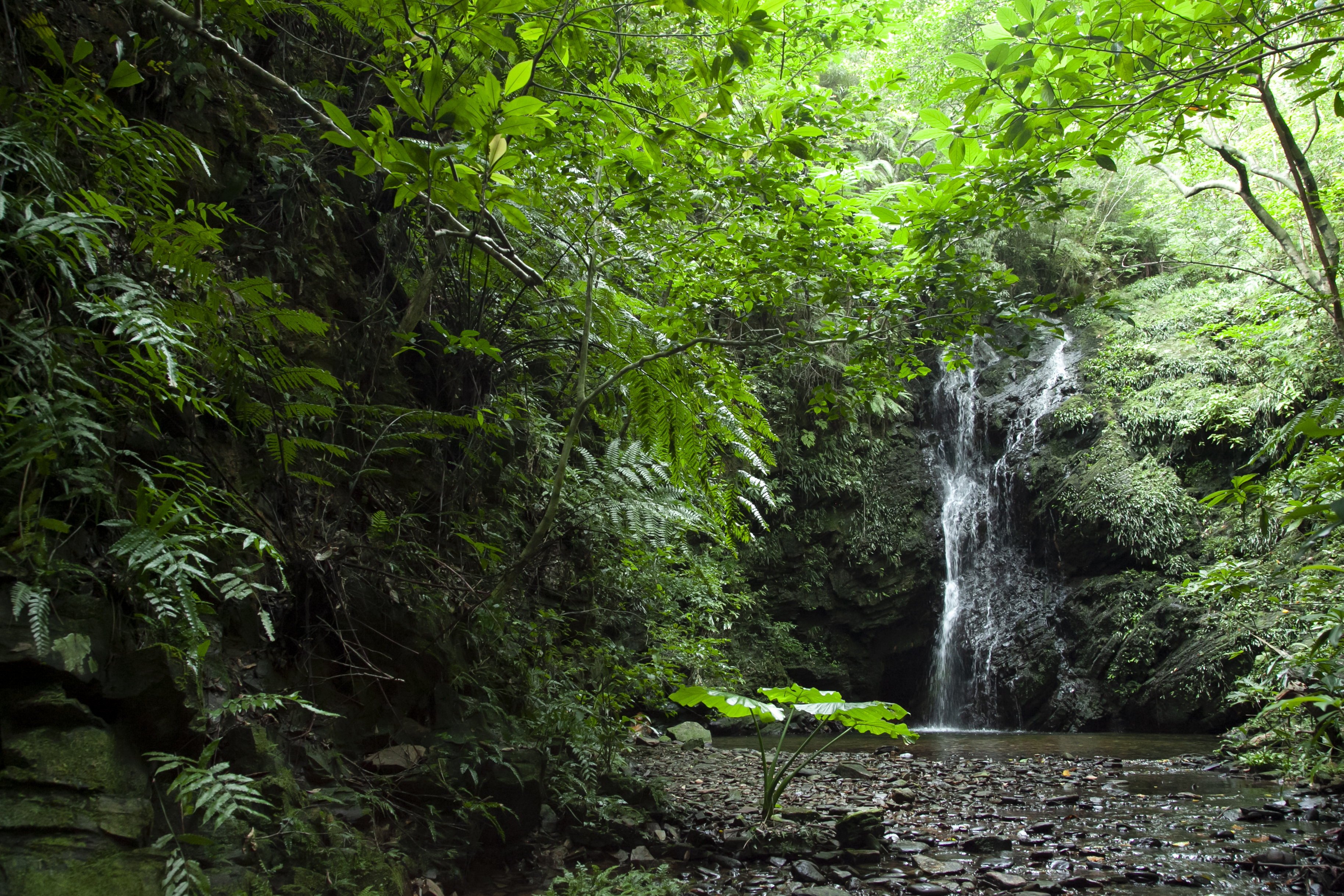
Yanbaru Discovery Forest, recently inscribed as a World Natural Heritage Site
Pro tip: after hiking through the forest, reward yourself with an exquisite cup of green mango sorbet and cacao ice cream from nearby OKINAWA CACAO.
While either option might not be what immediately springs to mind when on a tropical island, topping off your visit to Okinawa by learning about Ryukyu’s traditional form of karate or exploring the lush forest of Yanbaru (or both!) adds the finishing touches to a distinct and thoroughly satisfying experience on the island.
From the understated spirituality of Okinawa Island’s southeast, to the resort haven that is the west coast and the unspoiled nature of the north, this piece has attempted to serve as an introduction of the undiscovered part of Okinawa.
The attractiveness of Okinawa comes from its unique history, blending Ryukyu, Japanese, and American cultures, as well as from the high-end travel options (found in hotels such as Hyakuna Garan or restaurants such as Innovative SHIROUX) that leverage this heritage to create truly unforgettable experiences.
Add to this all the charms that can be found on the many other islands making up the archipelago —which are worthy of their own article of similar scope—and you have all the makings of a premier luxury travel destination waiting to be explored.
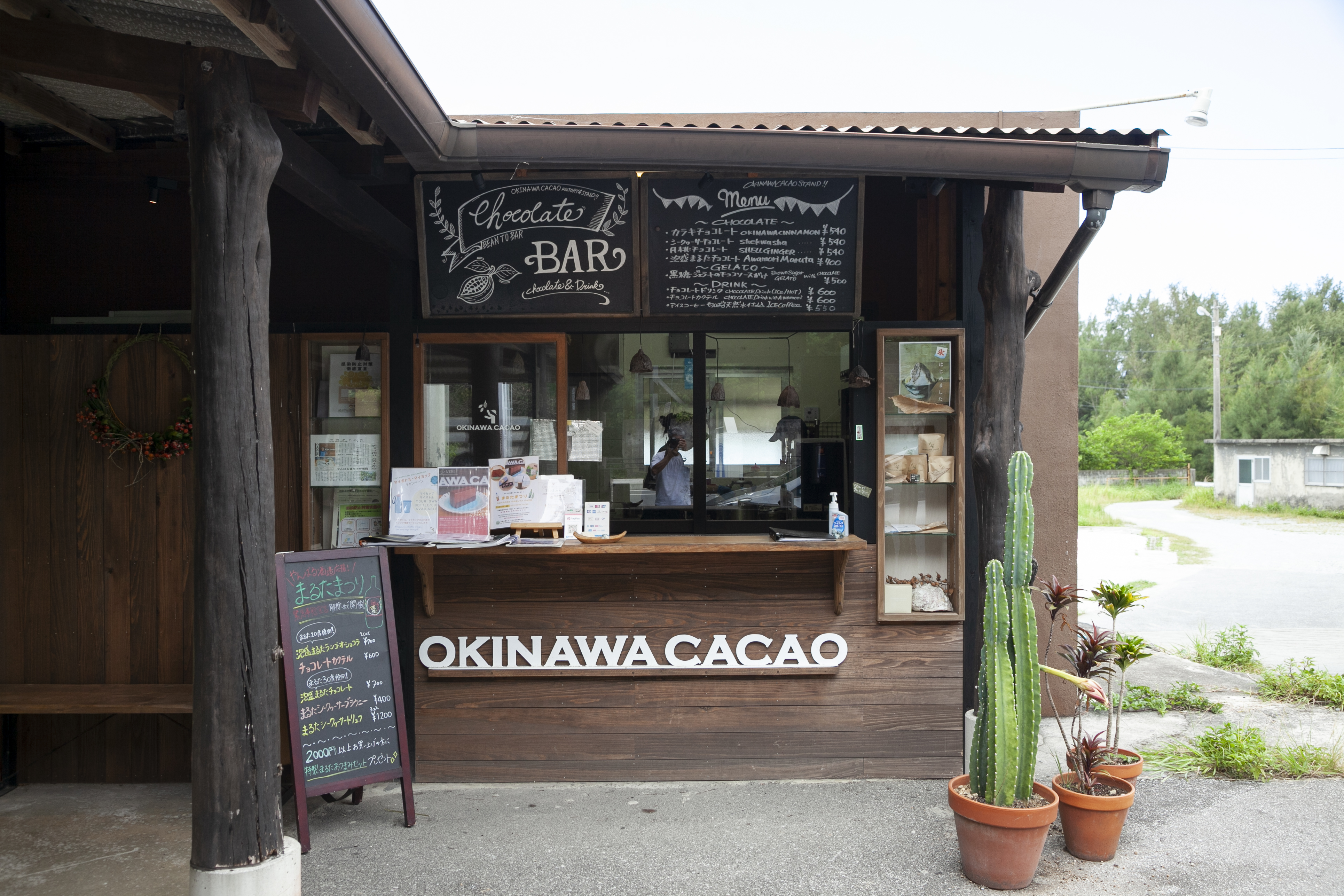
Café OKINAWA CACAO
TRENDING
-
The Tattoos that Marked the Criminals of the Edo Period
Traditional tattoos were strong signifiers; murderers had head tattoos, while theft might result in an arm tattoo.

-
Chiharu Shiota, Red Threads of the Soul
Last year, more than 660,000 people visited the retrospective 'Chiharu Shiota: The Soul Trembles' exhibit at the Mori Art Museum.

-
‘Before Doubting Others, Doubt Yourself. Who Can Truly Say a Dish Isn’t What It Used to Be?’
In ‘A Non-Conformist’s Guide to Surviving Society’, author Satoshi Ogawa shares his strategies for navigating everyday life.

-
The Story of Sada Yacco, the Geisha who Bewitched Europe
Described by Dazed magazine as the first beauty influencer, she has been restored to her former glory since 2019.

-
Ito Jakuchu's Naturalist Paintings
From 15 September until 14 October 2018, the Petit Palais showcased the artist's iconic ‘Images of the Colourful Realm of Living Beings’.





